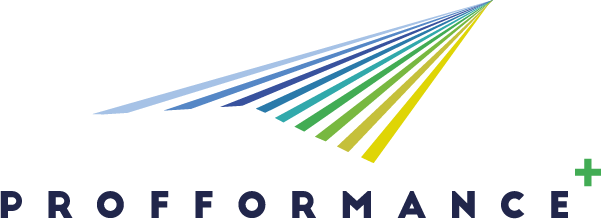INNklusion
INNklusion – Assistive solutions for people with disabilities
- 01 - Education
- 02 - Arts and humanities
- 03 – Social sciences, journalism and information
- 04 – Business, administration and law
- 05 – Natural sciences, mathematics and statistics
- 06 – Information and Communication Technologies
- 07 – Engineering, manufacturing and construction
- 09 – Health and welfare
- Other:
Course is part of the interdisciplinary course offering for all master students of the university
4. Impact and mission with and for society
- Service-learning and active citizenship learning for impact in society
- Promoting social responsibility through teaching professional and ethical values
- Teaching through real social projects addressing society’s global challenges
- Promoting students' social entrepreneurship projects
- Joint practices with social partners and stakeholders of civil society for empower students to active citizenship
INNklusion is a higher education initiative that combines transdisciplinary collaboration, student-centered learning, and societal impact. The program’s novel approach addresses real-world challenges faced by people with disabilities in their everyday lives. By engaging students from diverse fields (e.g., engineering, psychology, and educational sciences), stakeholders, and end-users in co-designing assistive solutions, INNklusion ensures practical and impactful outcomes. The program includes four parts: 1) raising awareness, sensitivity training, and team building, 2) engaging in a co-design process with students and people with disabilities to analyze, brainstorm, and find solutions, 3) developing and testing prototypes, and 4) presenting results to experts and stakeholders. Using design thinking and participatory methods, ideas are organized and transformed into innovations with continuous reflection. Past initiatives encompass a broad range of projects, from needs-based development and application of service concepts to app programming and the design of mechanical and mechatronic systems. These include a stimulus-reduced shopping concept for people on the autism spectrum, an accessible public transport navigation platform, a communication aid for locked-in syndrome, a bed covering device for limited mobility, and an assistive device for photography. All solutions followed a user-centered co-design process to ensure accessibility and usability. INNklusion’s flexible design-thinking-based approach is transferable to other contexts, making it a model for diversity, sustainability, and innovation in higher education. This process fosters active engagement, critical thinking, and prepares students for professional challenges by exposing them to real-life problem-solving. They can contribute to a more inclusive society by linking their academic knowledge with societal challenges. In line with the UN’s Sustainable Development Goals, INNklusion addresses inequities by empowering people with disabilities, emphasizing their expertise in the design process, and fostering inclusion through collaboration.
Methodology
Tools, equipment, technology used
Outcomes and outputs, main results
Lessons learnt
Adaptability and sustainability of the best practice (for other institutions)
Promotion of best practice
Scope and impact
- Course/department level
- Faculty level
- Institutional level
- Cross-institutional level
- National level
- EU/EHEA/International level
6.1 Digitalization
- Innovative, novel methodology in using digital tools/devices in teaching
- Digital skills development and assessment both general and profession-related, embedded in course design, in teaching and assessment
- Other:
Inclusive digital tools
Reasoning: INNklusion fosters digital skills by integrating tools for prototyping, research, and collaboration into project-based learning (e.g., CAD, digital working platforms, such as Mural, programming, state-of-the-art review). Depending on the project focus, solutions are implemented and disseminated in digital formats to ensure accessibility and broader reach. Digital tools are used to develop accessible assistive technologies and share projects digitally and open-source (e.g., website, Thingiverse).
6.2 Internationalization
- International projects/research results embedded into course development and T&L
Reasoning: INNklusion addresses global challenges by involving students in co-designing assistive solutions with international relevance. A "train-the-trainer" approach equips participants to replicate the procedure and methods globally. Results, including assistive solutions, are universally applicable (e.g., quiet hour) and open source (e.g., keyboard cover, finger blade). Students develop intercultural competencies through communication with transnational stakeholders, enhancing their global engagement.
6.3 Inclusion and diversity, universal design
- Inclusive course design, universally designed divers activities to meet special students' needs
- Innovative teaching methodology for inclusion and meet diverse student needs
- (Innovative) use of devices and tools for inclusion
- Senzitivizing students to consider special needs when practicing their profession
- Course includes hints on how the services/products of the profession could be universally designed/inclusive
Reasoning: INNklusion addresses the diverse needs of all students with flexible course content, interdisciplinary group work and supported accessibility. Prior to start, participants are encouraged to name specific needs, such as FM systems or interpreter support, and receive a barrier-free navigation guide in simple language to reduce stress and facilitate access. Sensitization workshops on inclusion by a person with disabilities, anonymous dot-voting on state of mind, inclusive team-building games, and joint work rules establish respectful and need-oriented interaction. The course focuses on independent project work where all participants contribute with their individual skill set. Theoretical inputs with practical exercises are organized along a design thinking approach, but specific focus is flexibly adapted to feedback and needs. The assessment consists of a group project report and presentation and an individual text about personal learning outcomes, experiences and contributions.
6.4 Sustainability
- Sustainability goals are addressed in the course(s)
- Teaching material contains profession related sustainability aspects
- Social entrepreneurship projects, service-learning in the topic
- Extra-curricular student activities for sustainability
Reasoning: INNklusion fosters sustainability through service-learning projects aligned with UN SDGs (#4, #9, #10, #17), promoting inclusion and equal participation for people with disabilities. Sustainability is embedded in all phases, ensuring long-term impact. Collaboration with universities, associations, and communities drives innovative assistive technologies, while open-source results enable scalable change. Extra-curricular dissemination raises awareness for societal sustainability.
3.3 Public contact datas
| Name | Email address | Website |
|---|---|---|
| Oliver Ott | Innklusion@uibk.ac.at | https://www.uibk.ac.at/de/projects/innklusion/ |

